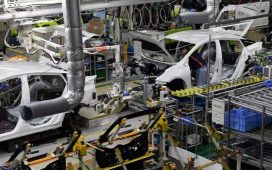Buoyed by forecasts of normal summer and monsoon as well as an anticipated surge in consumer spending during the general elections, companies have started producing summer goods such as AC, refrigerator, beverages, ice creams, and soaps at 15-20% higher levels than in 2023 when weather changes played a spoilsport in consumer demand, industry executives said.
“Last year, summer was very bad, but this year, all indications suggest a good season,” said Kanwal Jeet Jawa, chairman of Daikin Air-Conditioning India. “We expect sales to increase by 15-20% and hence production will increase by that level,” he said.
Private weather forecaster Skymet has predicted a normal monsoon this year with the ongoing El Nino, which dragged monsoon rains in 2023 to below-normal levels, expected to get softened. Also, the monsoon-supporting La Nina, triggered by the cooling of the Pacific Ocean, is likely to evolve during the latter half of the season, it said.
The United Nations’ World Meteorological Organization said the El Nino will last till April, pushing up temperatures to high levels.

Dabur chief executive officer Mohit Malhotra said a good monsoon this year will go a long way in enhancing income levels in the hinterland and boosting consumer sentiments.
Companies are also hopeful of the general election and increase in government spending boosting consumption, including in the hinterlands. “We expect gradual improvement in rural FMCG volumes from the first quarter of FY25, given the high election spending and hopefully no El Nino this year,” said Abneesh Roy, executive director at Nuvama Institutional Equities.
Last year, a weak summer, El Nino, patchy monsoon, and delayed winter all took a severe toll on consumer demand despite a bullish start, pushing the consumption recovery dateline to March-May 2024.
An uneven spatial distribution of monsoon last year, with parts of North and East India facing a second straight year of weak monsoon, impacted rural demand. Rural consumption is vital for a demand recovery as it contributes around 36% of overall fast-moving consumer goods (FMCG) sales.
“El Nino derailed the initial green shoots seen at the start of FY24,” Roy said.
He said a normal monsoon will help rural FMCG demand in the next fiscal.
Gujarat Cooperative Milk Marketing Federation (GCMMF), which owns Amul, said it looks to clock at least 30% on-year increase in ice-cream and beverages sales during summer on a weak base and high demand. “We are opening more than half a dozen manufacturing plants and expanding capacities in at least six facilities in the ice-cream segment,” said Jayen Mehta, managing director of GCMMF.
Air-conditioner and refrigerator manufacturers have already started peak production for summer.
The country’s largest air-conditioner contract manufacturer Amber Enterprises’ chairman and CEO Jasbir Singh said brands have started building summer inventory with orders more than 15% of last year.
Specific seasons account for over 60-80% of the annual sales of products like AC, refrigerator, ice-cream, beverages, washing machines, and skin care range.
A recent report by Jefferies said a widely anticipated rural recovery remained elusive for large FMCG companies in calendar 2023, despite cooling-off in input cost inflation, tapering of product price hikes, price reductions, and grammage increases in several categories.
“While companies did highlight green shoots through the year, events such as a volatile monsoon and jump in food prices dented rural sentiment,” the report said. “Industry volume growth nonetheless did see an uptick, albeit it was on a low base with two-year CAGR still below the average trend.”










